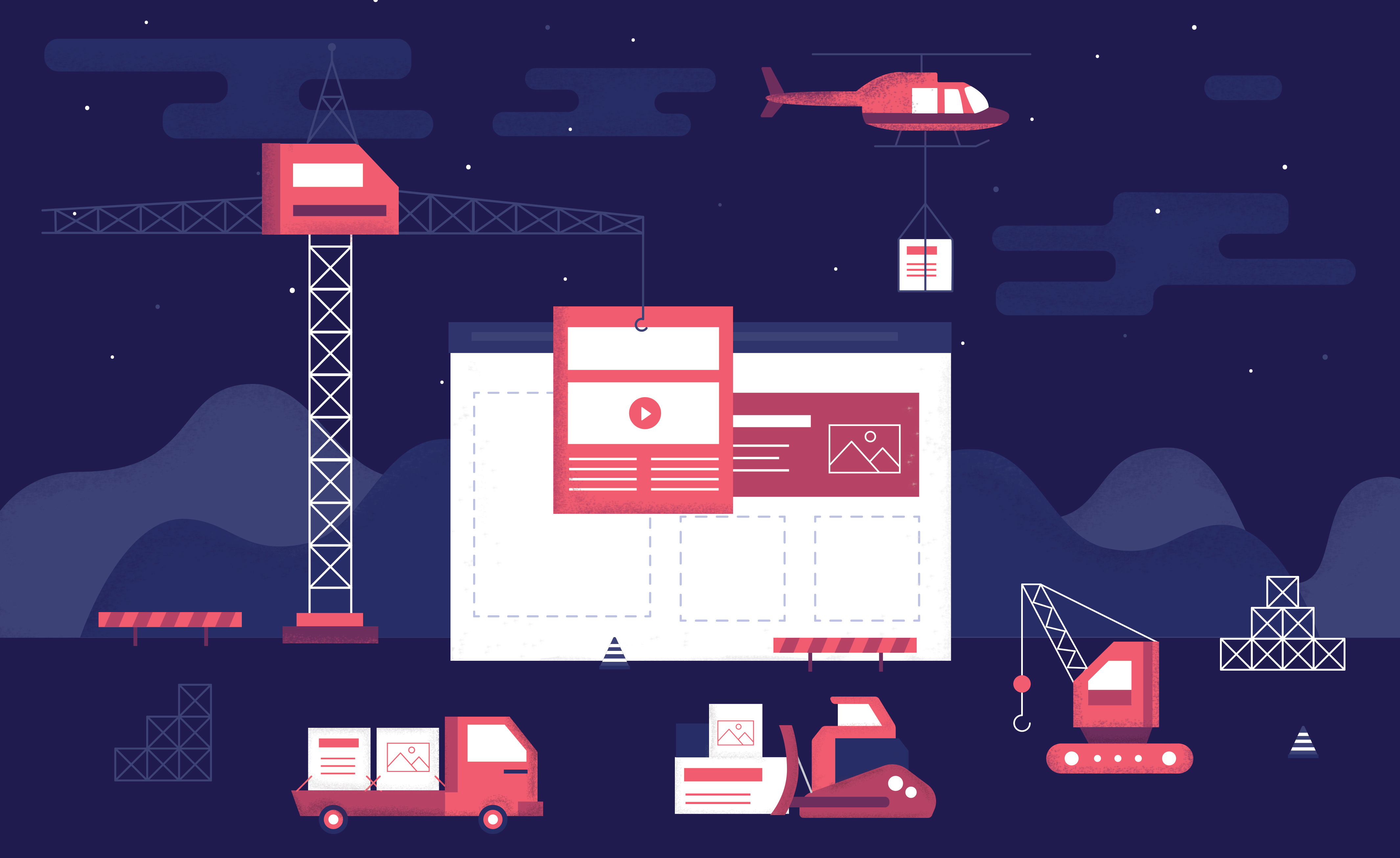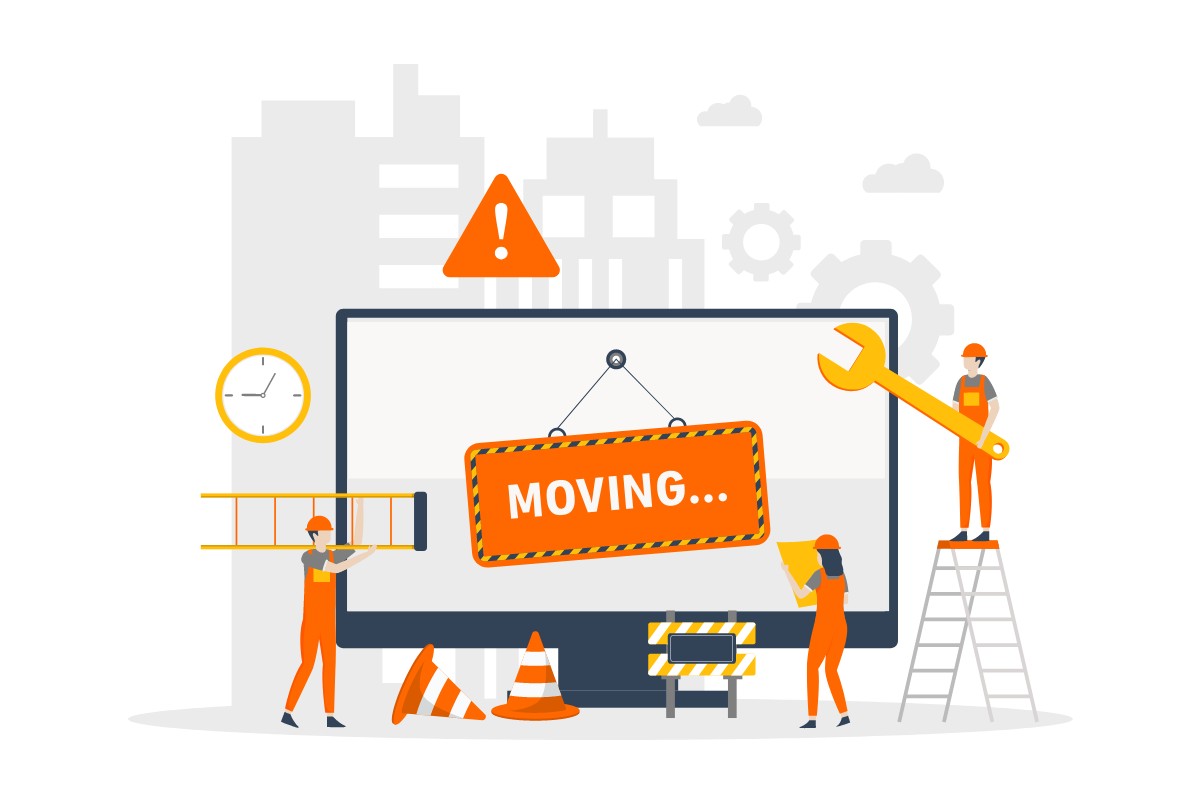
See why top ecommerce brands use Miva’s no-code platform to run
multiple stores, manage massive catalogs, and grow their revenue.
Thinking about moving to a new ecommerce platform? You're not alone. Recent survey data indicates that 27% of retailers are looking to switch platforms within the next year, and most are expecting to spend between $25,001 and $500,000 for an ecommerce platform migration.
Manufacturers, wholesalers, and distributors are also focusing on ecommerce platform technology–in another survey, 76% ecommerce professionals who responded said they plan to increase ecommerce technology spending in the next year.
Not sure where to start with your ecommerce migration? This guide to changing ecommerce platforms offers a straightforward overview of the platform migration process so you can familiarize yourself with the steps and key decisions involved. Written specifically for enterprise ecommerce professionals, this is a comprehensive guide to everything you need to know about kicking off an ecommerce migration project, including an ecommerce migration checklist.
Click here to download the guide (it’s free!).
Here’s a taste of what the guide covers:
An ecommerce platform migration (also called ecommerce replatforming or ecommerce migration) is when your business goes through the process of migrating your ecommerce website from one ecommerce platform to another. This involves transferring your website data, content, systems, and integration to another provider.
An ecommerce site migration can help you meet the ever-changing needs of your online business. If you’re looking to improve your website performance, keep the technology and features on your site up-to-date, and increase overall business efficiency, a platform migration can bring new opportunities to grow and scale your business and stay competitive.
Here are four key benefits you can enjoy when you migrate your ecommerce website to a more capable ecommerce platform provider:
Higher Conversion Rates and Volume
When shoppers arrive at your store, there should be some “wow” factor that gets them excited about your brand and your products. With a new platform, you have the potential to create a more modern and appealing site that gets shoppers to find what they’re looking for, fill up their cart, and proceed to purchase.
Higher Average Order Value
A new platform can also provide you with new tools for upselling to customers and convincing them to spend more on your site. You could offer relevant add-on products, bundles, higher-order discounts, and special offers.
Higher Revenue with Omnichannel Sales
Today’s online sellers are blurring the lines between B2B and B2C. Instead of hosting separate sites for B2B and B2C customers, you can migrate your ecommerce website to a platform that allows you to serve all of your customers on a single platform, with differentiated pricing, discounts, payment, and shipping displayed depending on the user.
Better Profitability with Back-Office Efficiency
Inefficiencies in the back office can be costly for your business. A new platform can help you streamline operations and integrate with a back-end ERP system, simplifying day-to-day operations and reducing the work needed to process sales and maintain the site.

How do you know when your business needs to start an ecommerce migration? Many of the reasons can be summarized into one phrase: your current platform takes too much effort. It takes too much effort for you to maintain your store, to reach out to customers, and to grow and scale your business.
Here are the key signs that it might be time to get a new ecommerce platform:
Your product line has outgrown your navigation.
User experience is everything. If you’ve got hundreds (or thousands) of SKUs, they need to be organized so shoppers can easily find what they want. You shouldn’t be limited to a specific number of products or categories.
Your store can’t handle traffic spikes.
Your site may have the features you need but if it can’t handle high amounts of traffic (especially during the holiday season), you’re losing out on revenue. You need to migrate your ecommerce site to a solution that provides more stability and scalability.
Your website isn’t fully mobile ready or mobile responsive.
No matter what you sell, customers want to be able to look up and buy from their mobile devices. If your site isn’t ready for mobile commerce (and that includes the checkout process!), you’re losing sales and online visibility.
Your website security is lacking.
If your ecommerce store has security gaps, it not only requires more resources from your IT team but also compromises your customers’ information and their trust in your business.
Your customers are not satisfied with your website.
Another sign that you’re ready for an ecommerce replatform is when your support team is overwhelmed with questions, and your cart abandonment rates are high. This means your website is falling short of attracting, informing, and selling to your customers.
Your admin panel is too hard to use.
If it takes hours to edit and publish content on your website or locate order numbers and shipping information, your current admin panel is slowing down your business.
New features and updates become more difficult to implement.
You sell complex products and high SKU-count catalogs but find that your site is too lightweight to manage everything. Tiny updates take too much time to implement, and the SKUs in your product catalog are getting difficult to manage. This is a sign that you need a more seamless and capable platform for your business.
Your platform has limited no-code or low-code capabilities.
If your current platform requires extensive coding knowledge to make even simple updates or changes, it may be time to consider a move. Modern ecommerce platforms with no-code or low-code capabilities allow you to adjust your site—like updating product pages, adding new features, or modifying layouts—without needing a developer.
This flexibility saves time and costs associated with hiring technical resources and empowers your team to respond quickly to market demands, test new ideas, and improve the customer experience with ease.
You’re a B2B ecommerce business that wants to go B2C—or vice versa.
Operating B2B and B2C businesses used to require managing two websites, which takes more time, effort, and resources. However, today, you can handle multi-tier business accounts and B2C accounts on the same website. An ecommerce platform migration can make it easier to accomplish this.
You’re tired of fixing third-party apps.
Although they can add helpful features and functionality, plug-ins can become a nightmare to manage. Robust ecommerce platforms include native functionality for the most important site features and don’t require you to fix and update bolted-on solutions constantly.
Your total cost of ownership is increasing.
If you find that you have to invest in development to make up for missing capabilities constantly, this means your total cost of ownership for your current platform is higher than it should be. An ecommerce migration can help resolve this problem—switching to a more robust and full-featured platform can provide more out-of-the-box functionality for your business.
Your platform is outdated.
When your current platform provider stops supporting the software, an ecommerce replatform is necessary to keep your website up-to-date, secure, and competitive.
You’re confident your business can do better.
Higher conversions, more return customers, and increased order values—these small improvements can add up to major revenue. Perhaps you’ve even started looking at your ROI calculations. While your current site is reliable enough, it may be missing features you want and need to grow your business.
The platform you choose is vital to the ecommerce replatforming process. You need to pick the right platform to maximize the value of your migration and to ensure that your business goals are met. To choose the right platform, you’ll want to:

Migrating your ecommerce website to the right ecommerce platform can significantly improve your business. However, before you conduct an ecommerce site migration, you should decide the scope and extent of your migration.
Do you want to change your site structure, your look and feel, or your content?
There are three options to consider when you migrate your ecommerce website: the minimum viable template, the customized template, or the fully customized site.
Minimum Viable Template: This is the fastest, most straightforward, and least expensive option. With a minimum viable template, you select an existing template and add your products, business rules, and data. This approach is ideal for businesses that want a quick setup without investing in custom development.
Customized Template: With a customized template, you start with a standard template but make specific modifications to better fit your brand or improve functionality. This option offers some customization without the cost or time of a full redesign, suitable for businesses wanting a unique appearance.
Fully Customized Site: This involves building a site from the ground up with a completely unique design, tailored development, full data migration, quality assurance testing, and launch scheduling. This approach is ideal for brands with unique requirements or a need for a highly customized online experience.
After deciding on the right path, you’ll also need to take the following steps:
Planning and Preparation
Define clear goals for the migration, establish timelines, and assign roles. Conduct an audit of your current site’s content and data to determine what will be migrated. Planning is critical to ensure alignment with business objectives and efficient resource use.
Selecting a Migration Approach
Decide on a migration approach—whether you’ll use a minimum viable template, a customized template, or a fully customized site. This choice will affect the project’s timeline, budget, and customization level.
This is also where most migrations succeed or fail. Focus on:
Setting Up the New Platform
Begin setting up your new platform by configuring essential settings, user roles, and permissions. Ensure all core features align with your operational needs. This stage includes preparing for data migration, setting up site structure, and mapping out key integrations.
Testing and Quality Assurance
Conduct thorough testing on all pages and functionalities. Test site speed, mobile responsiveness, and security settings. This step helps to catch any issues early, ensuring that your site delivers a smooth and secure experience when it goes live.
Launching the New Site
After completing testing and quality checks, deploy your site according to a detailed launch plan. This plan should cover launch timing, team coordination, and contingency measures. Make sure to inform stakeholders and prepare a strategy for addressing potential post-launch issues.
Post-Migration Optimization
Monitor site performance, user behavior, and key metrics in the weeks following launch. Conduct additional testing to ensure the site meets performance and customer experience standards. Use feedback and analytics to implement improvements that further optimize the new site.
Who’s going to be on your dream team to migrate your ecommerce website? This decision will impact what you build, how long it will take, how much it will cost, and how enjoyable the experience will be. Here are your options for migration:
Keep it in-house
If you’ve got design and development resources in-house, you’ll likely consider them first. The advantage is control: even if you don’t completely set the team’s schedule, you’ll at least have daily visibility into what they are working on. However, the migration project may not be their only priority, and migration will impact their workload.
Contract with an agency partner
Many professional web development agencies specialize in ecommerce migration and have been trained on one or more ecommerce platforms to help you the most out of your migration. Miva, for example, partners with a number of agencies and system integrators.
Engage with the provider’s in-house professional services
When you partner with an ecommerce provider’s professional services team, you can get much more than talented design and IT professionals. Not all providers offer this service, but it’s worth looking into as you assess providers. Because they are in-house, professional services teams will have advanced knowledge of their platform, as well as speedy access to product experts for solving problems, coming up with creative solutions and integrating with third-party partners.

Questions to ask your potential ecommerce migration partners
When evaluating potential ecommerce solutions, ask these key questions to assess their experience, approach, and compatibility with your migration needs:
Data security is critical during an ecommerce platform migration to protect sensitive customer information and maintain compliance. Here are some steps to secure your data throughout the process:
By selecting the right website migration service, evaluating pros and cons, asking the right questions, and ensuring data security, you can manage a successful, secure migration that enhances your ecommerce platform’s capabilities.
The process of ecommerce replatforming can be daunting, but migrating your ecommerce website to the right platform can help secure the long-term success of your business. To thrive in ecommerce, you’ll want to choose a platform that will meet your goals and needs. and offer you all the built-in tools and functionality needed to drive revenue.
The Complete Guide to Changing Ecommerce Platforms includes the 10 Steps to Migration Success. To receive your free copy of the Complete Guide to Changing Ecommerce Platforms, click here.
To learn more about different ecommerce platform options and providers, check out our Comparison of Ecommerce Software & Features.
Ready to talk to a Solutions Architect about a move to the Miva platform?
Book a time today.
This blog was updated on December 9, 2021.

Elisa Williams is a journalist and communications strategist who combines storytelling with solid research and analysis. A contributing author to the Miva Blog, Elisa has written for a wide array of consumer, business and technology publications, including Newsweek, Real Simple, Computer Life and Inc. Her marketing and content development work includes supporting technology companies that specialize in ecommerce, financial services and big data.
Share this article:
No worries, download the PDF version now and enjoy your reading later...
Download PDF Miva
Miva
Miva offers a flexible and adaptable ecommerce platform that evolves with businesses and allows them to drive sales, maximize average order value, cut overhead costs, and increase revenue. Miva has been helping businesses realize their ecommerce potential for over 20 years and empowering retail, wholesale, and direct-to-consumer sellers across all industries to transform their business through ecommerce.
Visit Website